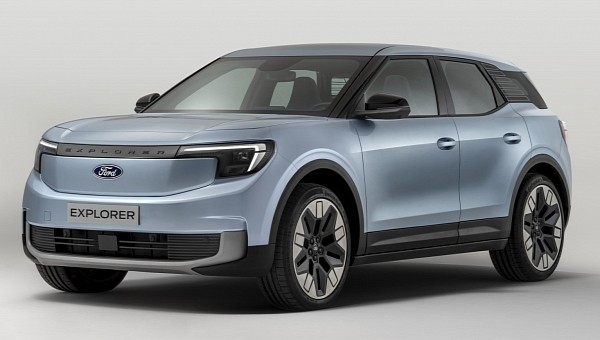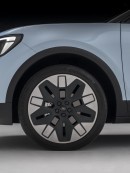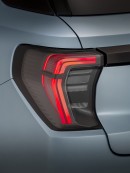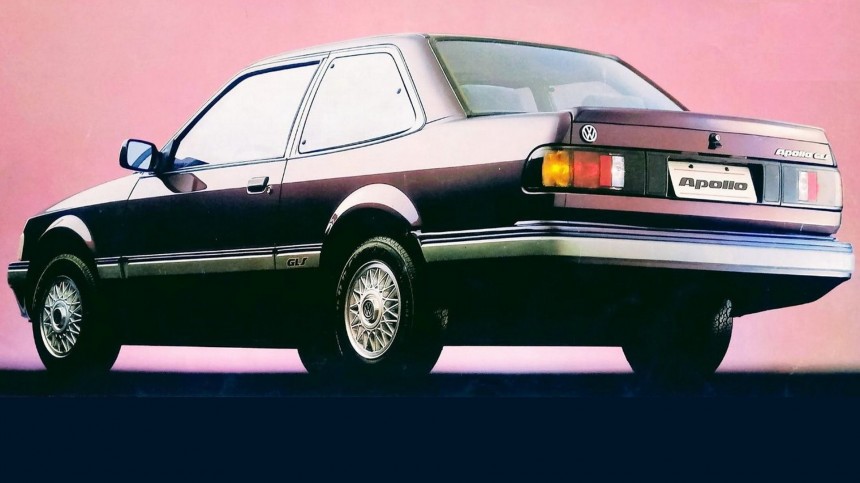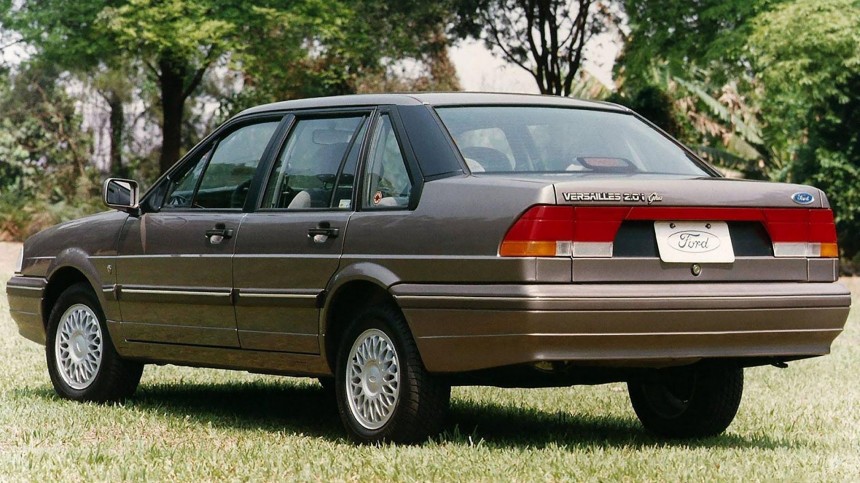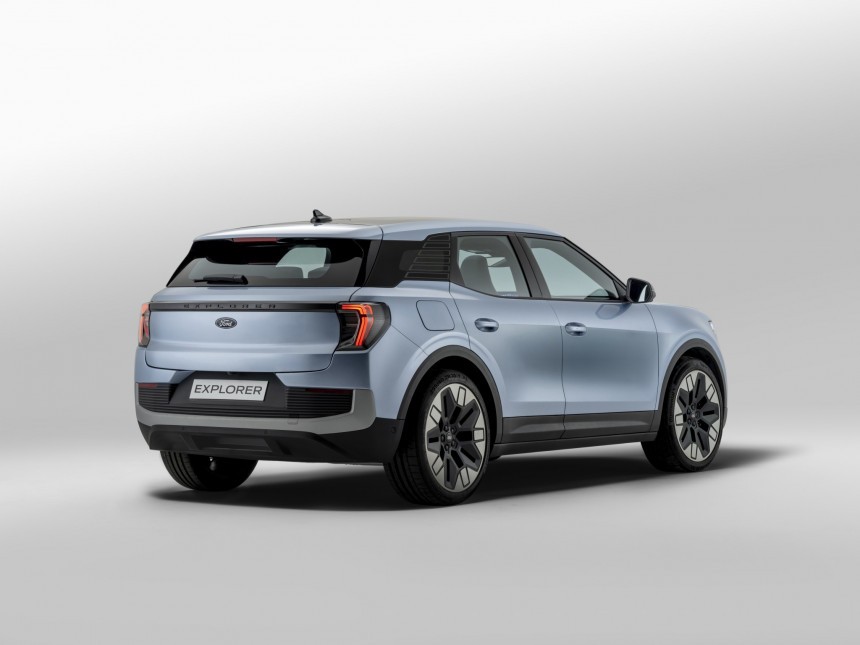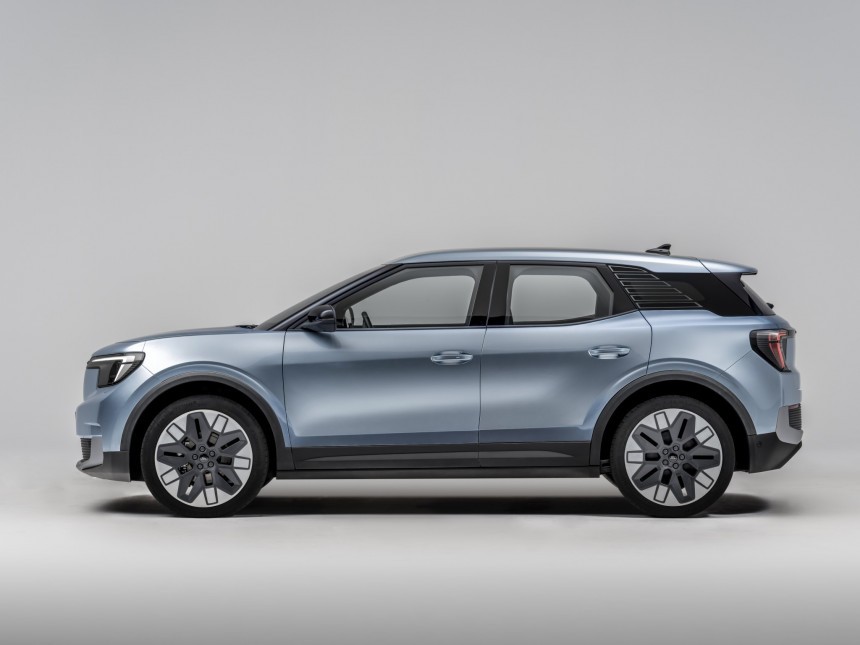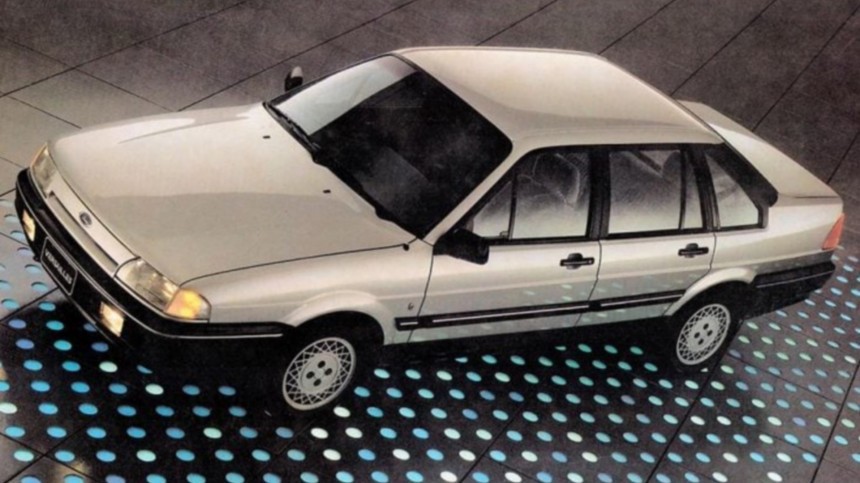Back in the 1980s, Ford faced a dire situation in South America. The car market there was not big enough to justify massive investments. At the same time, it had substantial growth potential. Instead of leaving, the American automaker joined forces with Volkswagen to form Autolatina. From several perspectives, this is pretty much what Ford also did when it developed the new Explorer EV over Volkswagen’s MEB.
Autolatina was a more formal integration between the American and the German carmakers. It was a holding that represented both brands. All cars they sold in Brazil and Argentina at the time came from Autolatina, not from Ford or Volkswagen. You can still see that in VIN plates and owner’s manuals from vehicles made in that period. The Volkswagen Santana allowed Ford to sell the Versailles/Galaxy, while the Ford Verona (a two-door, three-box, fourth-generation Escort) was badge-engineered to become the Apollo, Volkswagen’s briefest model ever: it lasted only two years.
Cleverly, Ford did not badge-engineer the Volkswagen ID.4. It used the electric SUV’s platform to create a European product. The American automaker had two other options, but none of them was as convenient.
The first one was to develop a new EV from the ground up, perhaps even using the Mustang Mach-E’s architecture. The issue is that Ford is developing a new platform for the second-generation Mach-E called GE2. It was supposed to be presented by mid-2023, but it would not surprise anyone if the company either preferred to make its premiere in the U.S. or just faced some developmental delays.
Even if the GE2 was ready for the Explorer EV, the Blue Oval brand would have another problem to solve: local production capacity to build thousands of electric cars. Not the body panels and structures – which it is perfectly capable of producing in Europe – but the battery packs. Ford is concentrating these efforts on the American market for now. In fact, it will close factories in the OId Continent, and BYD may buy the Saarlouis plant, which currently produces the Focus.
The second option Ford had was to make the EV in China, where it produces the Mach-E and the Territory EV. The issue here is that a vehicle based on the Territory would derive from the JMC Yusheng S330, and it would still be manufactured outside the European Union. That probably made the partnership with Volkswagen sound more enticing.
Thanks to the partnership, Ford managed to keep its Cologne factory busy producing the new EV. The American automaker and Volkswagen did not disclose the manufacturing steps, but Ford probably receives the body structures from the German carmaker, perhaps even a rolling chassis. Another possibility is that Ford makes everything with Volkswagen’s blueprints and just adds the battery pack, which the German carmaker must ship to the Cologne plant. Volkswagen makes MEB cars in Zwickayu, Emden, Hanover, and Mlada Boleslav, in the Czech Republic. The closest one to Cologne is Hanover.
This would be the second similarity between the new partnership with Volkswagen and Autolatina: the underpinnings and main components of the Explorer EV carry Volkswagen’s signature. Unlike the South American joint venture, the same factory in charge of the Santana made the Ford sedan. Would the American automaker save some bucks if Volkswagen made the Explorer EV for it? Quite likely. However, the Cologne plant would possibly have to shut down: it used to manufacture the Fiesta.
This is probably the most crucial resemblance the new deal has with Autolatina. The South American holding was created to save jobs and keep Volkswagen’s and Ford’s factories busy and ready for when sales improved. The joint venture imploded in 1996 when the car market started expanding in Brazil and Argentina. Ford had just decided it would better sell a car to compete with the Volkswagen Gol, the German brand’s best-seller. The Autolatina deal suggested Ford could have its own version of the Gol, and it even designed the hatchback, but Volkswagen’s headquarters stepped on the brakes to prevent it from ever being produced.
Nowadays, Ford is preparing for the EV shift. It ceased manufacturing operations in India and Brazil to save money and even created a new job: Chief Transition Officer. John Dion will help implement Lean manufacturing measures for the automaker to fulfill its Ford+ plan. In other words, he will find opportunities to cut costs with manufacturing – improving profit margins – while also preventing recalls and defects.
The “Autolatina-revival” deal Ford made with Volkswagen is supposed to be as temporary as the original arrangement in South America. It will be just enough for the American automaker to introduce the GE2 or another EV architecture that will allow it not to use the MEB in Europe. However, Ford would better have learned the lessons from the previous experience.
When Autolatina died, Ford launched the fourth-generation Fiesta in South America. The model was quickly nicknamed “Sad Fiesta” because of its droopy headlights. In other words, it was a European product that did not sit well with South American tastes. Ford was about to stop production in Brazil when it decided to build the Camaçari factory that BYD is now supposed to buy. Summing up, none of the strategies the automaker adopted made it profitable enough in Brazil to keep production lines there.
The new deal with Volkswagen represents Ford’s global preparation for battery electric vehicles. Charmed by Tesla’s success, the centenary automaker is another one betting everything it has on cars with battery packs. If that bet fails, Ford does not risk stopping to make vehicles in a few countries: it may either become an American brand restricted to its home market or just disappear, as Autolatina did. When you remember that General Motors left Europe years ago, killed SAAB in the process and that Opel and Vauxhall only became profitable with Stellantis, that can give you a fair idea of how much hard work lies ahead for Ford to do well in the Old Continent. The EV shift only makes it even more challenging than it already was.
Cleverly, Ford did not badge-engineer the Volkswagen ID.4. It used the electric SUV’s platform to create a European product. The American automaker had two other options, but none of them was as convenient.
Even if the GE2 was ready for the Explorer EV, the Blue Oval brand would have another problem to solve: local production capacity to build thousands of electric cars. Not the body panels and structures – which it is perfectly capable of producing in Europe – but the battery packs. Ford is concentrating these efforts on the American market for now. In fact, it will close factories in the OId Continent, and BYD may buy the Saarlouis plant, which currently produces the Focus.
Thanks to the partnership, Ford managed to keep its Cologne factory busy producing the new EV. The American automaker and Volkswagen did not disclose the manufacturing steps, but Ford probably receives the body structures from the German carmaker, perhaps even a rolling chassis. Another possibility is that Ford makes everything with Volkswagen’s blueprints and just adds the battery pack, which the German carmaker must ship to the Cologne plant. Volkswagen makes MEB cars in Zwickayu, Emden, Hanover, and Mlada Boleslav, in the Czech Republic. The closest one to Cologne is Hanover.
This is probably the most crucial resemblance the new deal has with Autolatina. The South American holding was created to save jobs and keep Volkswagen’s and Ford’s factories busy and ready for when sales improved. The joint venture imploded in 1996 when the car market started expanding in Brazil and Argentina. Ford had just decided it would better sell a car to compete with the Volkswagen Gol, the German brand’s best-seller. The Autolatina deal suggested Ford could have its own version of the Gol, and it even designed the hatchback, but Volkswagen’s headquarters stepped on the brakes to prevent it from ever being produced.
The “Autolatina-revival” deal Ford made with Volkswagen is supposed to be as temporary as the original arrangement in South America. It will be just enough for the American automaker to introduce the GE2 or another EV architecture that will allow it not to use the MEB in Europe. However, Ford would better have learned the lessons from the previous experience.
The new deal with Volkswagen represents Ford’s global preparation for battery electric vehicles. Charmed by Tesla’s success, the centenary automaker is another one betting everything it has on cars with battery packs. If that bet fails, Ford does not risk stopping to make vehicles in a few countries: it may either become an American brand restricted to its home market or just disappear, as Autolatina did. When you remember that General Motors left Europe years ago, killed SAAB in the process and that Opel and Vauxhall only became profitable with Stellantis, that can give you a fair idea of how much hard work lies ahead for Ford to do well in the Old Continent. The EV shift only makes it even more challenging than it already was.
